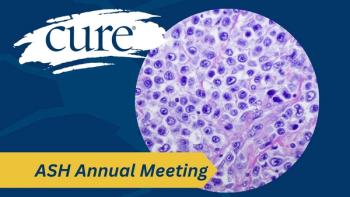
Childhood Cancer Survivors at Increased Risk for High Blood Pressure
Approximately 420,000 Americans are adult survivors of childhood cancer, and these individuals may be twice as likely to have high blood pressure, also known as hypertension, according to researchers at St. Jude Children’s Research Hospital.
Approximately 420,000 Americans are adult survivors of childhood cancer, and these individuals may be twice as likely to have high blood pressure, also known as hypertension, according to researchers at St. Jude Children’s Research Hospital.
Because of improved treatments — such as chemotherapy and radiation – survival rates in pediatric cancers have increased, with about 83 percent of children surviving at least five years. But with these improved treatments come late side effects. In particular, adult survivors have an increased risk for heart problems, which is furthered by high blood pressure.
“Hypertension is an important and potentially modifiable risk factor for cardiovascular disease in everyone, but is particularly important in childhood cancer survivors who were exposed to cardiotoxic cancer therapies such as chest radiation and anthracyclines,” Todd M. Gibson, Ph.D., assistant faculty member in the Epidemiology/Cancer Control department at St. Jude Children’s Research Hospital, said in an interview with CURE.
Gibson and colleagues evaluated the prevalence of high blood pressure among 3,016 adult survivors of childhood cancer who were part of the St. Jude Lifetime Cohort Study, which provides ongoing medical assessments of childhood cancer survivors to advance knowledge of their long-term health outcomes.
The researchers found that the prevalence of high blood pressure was 2.6 times higher among childhood cancer survivors compared with the general population. This prevalence increased over time, including 13 percent of survivors who had high blood pressure at age 30, 37 percent at age 40, and more than 70 percent at age 50.
“The results suggest that survivors and their health care providers should be aware of the increased risk of hypertension, and should pay close attention to blood pressure monitoring as survivors age,” Gibson said.
Higher prevalence of high blood pressure also occurred more in men; non-Hispanic blacks, older survivors and those who were overweight or obese. However, the researchers found that exposure to radiotherapy or chemotherapy were not significantly associated with high blood pressure.
Despite this finding, Gibson noted that the connection between childhood cancer survival and adult hypertension is multifactorial and worthy of future research. “One important line of research to follow-up these results is identification of the mechanisms underlying the increased prevalence of hypertension we observed in survivors,” he added. “Our analysis included data on cancer treatments, but we did not identify significant associations between radiation or specific chemotherapy agents and prevalence of hypertension. A second important area of research is development and testing of effective interventions for the prevention and management of high blood pressure in survivors.”
While further research is conducted, Gibson recommends for clinicians and patients to be mindful of these findings. “In general, survivors likely benefit from being aware of their unique health risks and discussing these risks with their health care providers. This study emphasizes that blood pressure monitoring and the importance of blood pressure management should be a part of these conversations.”





